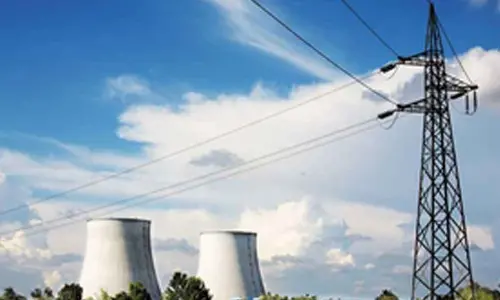A visionary Budget for 'Amrit Kaal'

A visionary Budget for ‘Amrit Kaal’
The Union Budget presented by Finance Minister Nirmala Sitharaman on February 1, heralds the advent of Amrit Kaal, as she rightly put it, setting the tone to power India into the league of fully developed nations by 2047
The Union Budget presented by Finance Minister Nirmala Sitharaman on February 1, heralds the advent of Amrit Kaal, as she rightly put it, setting the tone to power India into the league of fully developed nations by 2047. It underpins the sustained inclusive growth trajectory and sets the stage for India to be a powerhouse on the global stage as a technology-driven, knowledge economy.
Budget 2023 is a well-structured, visionary document which outlines the roadmap for future development on various fronts. It is appropriately being seen as a growth-oriented budget aimed at improving the lives of people belonging to all sections of society. In the words of financial experts and economists, the budget hit all the right buttons and ticked all the boxes. It has justly been welcomed by industrialists and experts and has been characterised as a smart, pragmatic and inclusive budget.
In broad terms, the main thrust of development in Amrit Kaal's first Budget can be seen through the Saptarishis or seven key principles or priorities which serve as a guiding light. They centre around green growth, youth power, inclusive development, digital public infrastructure for agriculture, reaching the last mile, unleashing the potential and financial sector.
Appropriately enough, the Finance Minister pointed out that Budget 23-24 was people-centric in nature and based on the principle of 'Jan Bhagidari' or participation of people and that "sab ka prayaas" and "sab ka saath" lie at the heart of "jan bhagidari."
From significant changes in the personal tax regime bringing relief to the middle class, to stepping up public investment in infrastructure, to specifically targeted schemes for diverse segments, the budget inspires optimism and confidence. The government's vision also reflects efficient fiscal management and budgetary prudence. The fiscal deficit is to be pegged down to 5.9% in FY 24 from 6.4% the previous year.
A 33% increase in capital expenditure sends a strong message about the development story being scripted by the government under Prime Minister Narendra Modi and this increase in capital expenditure to Rs. 10 lakh crore takes the total capex in the budget to 4.5% of the GDP.
The focus on infrastructure development will lend a further impetus and accelerate the engines of our economic progress. The envisioning of 50 additional airports to improve air connectivity, in addition to helipads, water aero drones and advanced landing grounds are measures which would serve to improve air connectivity locally. The railways have been allocated Rs.2.4 lakh crore which would strengthen and modernise the network across the country.
Far reaching changes in the area of personal taxes are set to bring a great amount of relief to the middle class with zero tax for those earning up to Rs. 7 lakhs. The new tax regime is expected to become the default tax regime for taxpayers. The government has effectively signalled its intent to transition to a lower and more facile taxpaying system. Higher interest rates and more attractive small savings schemes, especially for senior citizens and women are bound to incentivise discretionary spending.
For instance, Senior Savings Schemes limit for investments has been hiked to Rs.30 lakhs now from Rs.15 lakh. Women have been at the heart of development architecture of the government since 2014. As this Budget envisages, Mahila Samman Savings Schemes investments can be made till Rs. 2 lakhs with 7.5% for 2 years, with no TDS. The limit for presumptive taxes has been increased to Rs. 3 crores in the case of businesses and Rs. 75 lakhs for professionals in yet another significant move. Attempts have been made to overhaul of the system of personal taxes. The thrust to digitisation will gain fresh momentum with greater telecom connectivity and the establishment of 100 labs for 5G services. Women's empowerment and agricultural credit are among other areas of special focus. MSME will get an additional Rs. 2 lakh crore of debt funding from the Government which will lend a tremendous boost to this sector.
What is being seen as a game-changer is the emphasis on skill-development in the budget. A targeted thrust towards education and skilling through Pradhan Mantri Kaushal Vikas Yojana 4.0 signifies the futuristic vision embedded in Budget 2023-24. Ramping up skill development among youth, setting up centres of excellence to train youth on AI skills and the concept of setting up a Skill India Digital Platform, as also 30 Skill India International Centres across the country will bring digitisation to skilling and mark a leap in job-readiness and employment generation.
The infusion of Rs. 79,000 crores towards affordable housing marks another important step towards strengthening rural infrastructure. Water has been a key area of focus all along in the NDA-II vision of development. A budget of Rs. 70,000 crores has now been allocated for the Jal Jeevan Mission, which is set to cover a staggering 20 crore households by providing them with clean drinking water by 2024.
On the agricultural front, the budget seeks to make India the global hub for millets which have been renamed Sree Anna in view of their nutritional status and overall importance in India's agricultural scene.
Yet another significant allocation is with regard to Rs. 3,000 crore to develop the semiconductor ecosystem. The amount is to be used for the development of semiconductors and display manufacturing ecosystems. A slew of initiatives to strengthen digital infrastructure in the fields of agriculture, finance and education will indeed bridge the rural-urban divide in a big way and drive India's development narrative with a fair measure of parity when it comes to all markers of socio-economic progress.
Meanwhile, the Finance Ministry's Economic Survey also forecast a growth rate of 6-6.8% for the year 2023-24. These are some of the highlights which point to inclusive and green growth as the mantra underpinning Budget 2023 showing the way to an Atmanirbhar and Vikasit Bharat.
The writer is the former Vice President of India.














